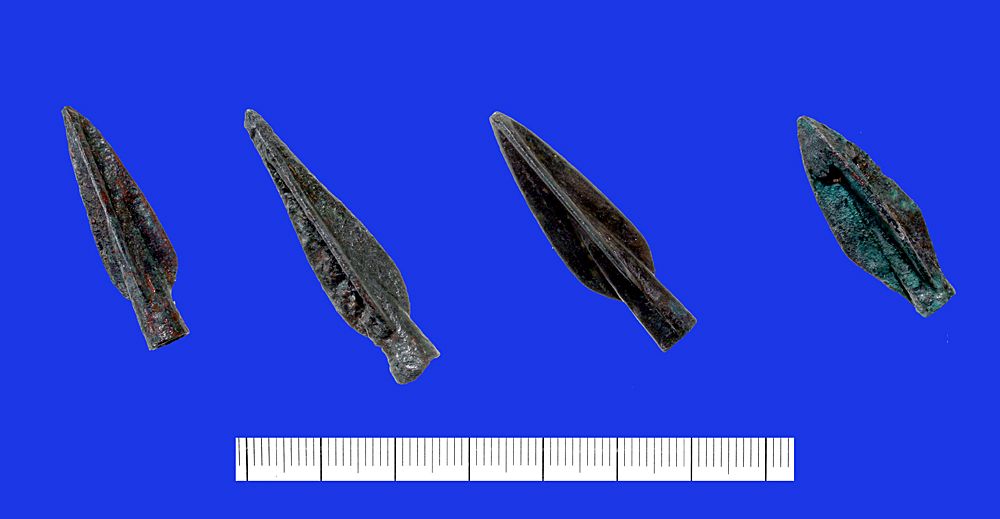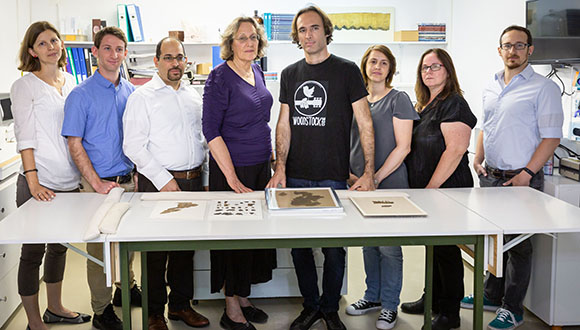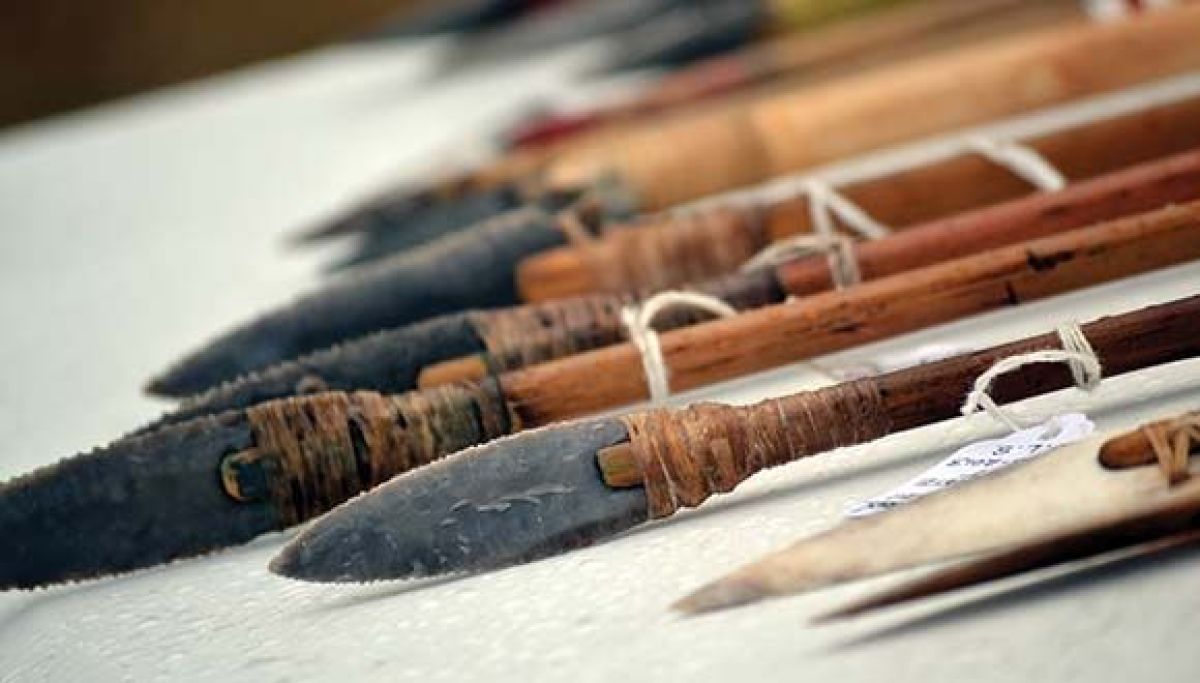Author: AUFTAU
Tel Aviv University presents an analysis of the reaction of human antibodies to the coronavirus
Patients with severe COVID-19 develop antibodies faster than those with a mild case of the disease.
A diagnostic tool
The researchers found that antibodies of the type IgM, that usually develop at the early stages of viral contagions, developed early in this case only against the protein RBD – the site at which the virus SARS-CoV-2 binds to human cells, and not against the virus’s nuclear protein. “We sampled the antibodies of about 70 COVID-19 patients at the Sharon Hospital, throughout the outbreak of the disease in Israel,” says Prof. Munitz. “Our first finding was that not all viral proteins generate a rapid immune response, but that antibodies targeting the RBD protein did develop very quickly once the symptoms appeared. This finding is quite significant, because it suggests that the test we used may be utilized as a diagnostic tool at different stages of the illness.” “The second thing we noticed, which is even more interesting, is that patients defined as severely ill developed antibodies at a faster rate than mildly ill patients, but ultimately all patients exhibited a similar immune response,” recounts Prof. Munitz. “Patients with mild, moderate and severe COVID-19 all developed the same level of antibodies. This is important, because one might have thought that the severely ill became so sick because they did not develop a sufficient amount of antibodies, and were thus unable to combat the virus effectively. We assume that the fast development of antibodies in these patients indicates that their immune system is hyper-active, but this hypothesis requires further research.”Immunological memory
“We measured the levels of antibodies in the patients’ blood when they arrived at the hospital, during the period of hospitalization and after their release,” explains Prof. Gerlic. “We tried to understand whether the level of antibodies in their blood corresponded in any way to the severity of the illness, whether the antibodies developed in a similar way in all patients, and whether they remained in the blood for long periods of time – a critical factor for the ‘herd immunity’ we all wish to attain. We found that at later stages of the disease, about 50 days after the initial appearance of symptoms, a significant decline occurred in the presence of antibodies types IgM and IgA, regardless of the severity of the illness. In IgG-type antibodies, however, we observed only a slight decrease, even in mildly ill patients. IgG-type antibodies play an extremely important role in the immune response because they can neutralize the protein that binds the virus to human cells to enable contagion – thereby preventing the virus from penetrating the cells. We have not yet examined how the antibody actually works, and we do not know whether or not it neutralizes the virus, but the facts that these antibodies are quickly produced in all patients, and stay in the blood for a long time, suggest that they provide some level of immunity. So far, we have found that IgG-type antibodies remain in the body for two months. We will continue to monitor the patients for another year, to find out how long the antibodies remain in their bodies – hoping for the formation of an immunological memory.” In the new study the researchers from TAU used a new serological test developed in their laboratory. The IDF’s Medical Corps has already used the serological test developed by Prof. Gerlic and Prof. Munitz to detect COVID-19 antibodies in the blood of IDF soldiers. Within the next few weeks the test will be sent to the Israel’s Ministry of Health for validation, so that it may be used in population surveys. “Alongside the interesting findings,” says Prof. Munitz, “we wanted to demonstrate that our method is valid and more effective than the prevalent test for antibodies targeting viral proteins. To this end we examined samples of antibodies from the blood of COVID-19 patients, alongside samples from 200 healthy participants, taken before November 2019. We proved that our test, based on the antibodies, was able to distinguish between those who were ill and those who were not – at very high levels of sensitivity and specificity. One reason for this success is that we screen for three different antibodies: IgM that appears early and declines early, IgA – found on mucous surfaces like the lungs, and IgG, which we intend to test in the long run, because it may possibly lead to immunity.Straight to the Point
A Link between Arrowheads Used by Ancient Empires and the Historical Events during the First and the Second Temple Periods.
Researches from Tel Aviv University proposed a novel model that ties arrowheads dated to the end of the First Temple and the beginning of the Second Temple period, with key historical events. They also managed to define different arrowhead types used by armies of ancient eastern empires. Many of the arrowheads, examined by the researchers, were found in destruction layers from Babylonian and Assyrian assaults on cities in the land of Israel, while others were found in camps in which those armies stayed. “Arrows were a key component in military tactics of the ancient world, and the importance of this weapon is mainly due to its ability to strike the enemy from afar.” Explains Dr. Guy Stiebel. “The use of arrows for hunting is already known from the prehistoric era, but developments in military forces during the Bronze era increased the use of bows and arrows.”
The following researchers took part in this study: Prof. Oded Lipschits and Dr. Guy Stiebel from the Department of Archaeology and Ancient Near East Studies, together with the research student Sean Dugaw, who wrote his M.A. thesis on the subject. The research was published in IEJ (Israel Exploration Journal).
In this study, the researchers show a model that accurately defines the development of arrowhead types starting from 7th century BCE. Prof. Lipschits explains, “Creating a new typology and marking the evolutionary process of arrowhead types and their chronological point of reference, gives researchers a new dating tool, which allows connecting the layers and sites in which evidence of battle activities of the Empires’ Armies, inside and outside the region of Israel, were found.”
The researchers explain that the various arrowheads discussed in the paper were developed and employed starting from 7th century BCE. Those arrowheads of the three bladed variety had an improved aerodynamic structure which steadied their flight and inflicted more serious wounds than the two bladed arrowheads which preceded them. The functional development of the arrowheads teaches us about combat tactics and the specialty of the archers in the East. Archers in these regions were known for their professionalism and the complex powerful bows that they used, as we see some arrowheads which were designed to penetrate armor (more common in the eastern Mediterranean) while others were made for accurate shooting from a distance.

The earliest known trilobate socketed copper-alloy arrowhead had two blades. Such arrowheads are often referred to by scholars as “Scytho-Iranian arrowheads”. They first appear in Israel during the mid-7th Century BCE at sites associated the Assyrian military occupation. In the study, the researchers suggest tying this appearance with mercenaries serving in the Assyrian army or exiles brought to the area from north of the Assyrian Empire. This arrowhead type does not appear in the Levant after the Assyrian Empire retreat.
The study identified a three bladed socket arrowhead variant associated with Babylonian activity in the region, especially during the military campaigns of Nebuchadnezzar II. This arrowhead type was initially used by the Scythians and Medes at the dawn of the Babylonian empire. It has been found at sites destroyed by Babylonians and Medes in Assyria and Syria. While it may have been used by Scythian mercenaries in Babylonian service, it was eventually adopted by the Babylonians themselves and was used prominently during the Babylonian military campaign against the Kingdom Judah which resulted in the destruction along with its main cities, most importantly – Jerusalem. It is possible that the development and intensive use of this arrowhead helped the Babylonians conquer their enemies. Such arrowheads are found in the administrative citadel in Ramat Rachel, and serve as a clear evidence of Babylonian presence in the area.
Additional arrowhead types were identified that dated to the Persian and Hellenistic eras, some of which were also found in capital cities of the Persian Empire and at the major battle sites of the Greco-Persian wars. They were used throughout the Hellenistic periodSome were even used by Jewish rebels during the second revolt. Although most of the arrowheads used by the Roman archers during the early Roman period were iron and were attached with a tang rather than a socket, they retained the three bladed design of the earlier periods.
This research fits well into the new program at the Departments of Archaeology and Jewish History. This program puts emphasis on the combined research and teaching M.A.: “Many Faces of War” – the History and Archeology of War in Israel, which is made for studying and examining the phenomenon of war, which is always both current and historic.
3D printed heart used to test life-saving drugs
Pharmaceutical company Bayer will test new drugs using human heart tissues 3D-printed in Tel Aviv University
Last April, Prof. Tal Dvir of the George S. Wise Faculty of Life Sciences, the Iby and Aladar Fleischman Faculty of Engineering and his team successfully produced the first-ever 3D-printed heart, from tissue extracted from a patient. The researchers estimate that it will be possible to print personalized organs and tissues within 10-15 years, thus eliminating the need for organ donations and the risk of transplant rejection. Meanwhile, this innovative technology already has the potential to revolutionize a different medical field: drug screening.Saving precious time
“In a Petri dish, all the cells line up in 2D, and it’s only one type of cell” says Prof. Dvir. “In contrast, our engineered tissues are 3D-printed, and therefore better resembles real heart tissues. Our printed tissues contain cardiac muscle, blood vessels and the extracellular matrix which connects the different cells biochemically, mechanically and electrically. Moving away from Petri dishes to 3D printed tissues could significantly improve drug tests, saving precious time and money with the hope of producing safer and more effective medication”. Ramot at Tel Aviv University has signed a collaboration agreement with Bayer to develop and validate a platform for in vitro cardiotoxicity screening, using human heart tissues 3D-printed in Prof. Tal Dvir’s Laboratory for Tissue Engineering and Regenerative Medicine. In upcoming years, Prof. Dvir’s team and Bayer plan to test new medication for toxicity and efficacy using printed whole human hearts. Drug candidates go through several phases of screening before reaching pharmacies. First, the new chemical compound is tested on human tissue cultures. Then, it is administered to lab animals. Finally, the drug is approved for human clinical trials. Prof. Dvir’s 3D-printed tissues could enable faster, cheaper and more efficient screening than Petri dishes. Prof. Dvir hopes to offer Bayer, in the near future, pre-clinical trials on complete printed organs. “Our agreement is just the beginning,” says Prof. Dvir. “Our end goal is to engineer whole human hearts, including all the different chambers, valves, arteries and veins – the best analogue of this complex organ – for an even better toxicological screening process.” To make further use of the application, Ramot at Tel Aviv University licensed the technology to a spin-off company called Matricelf, which first focuses on engineering personalized spinal cord implants to treat paralyzed patients. Matricelf has recently secured a large investment, allowing it to reach clinical settings in the near future.New, innovative drugs
Keren Primor Cohen, Ramot CEO said: “Prof. Dvir’s platform groundbreaking innovation is very promising. We believe that this collaboration with Bayer will support the evaluation and development of new drugs and is a step in building long-term relations with Bayer that we hope will benefit both partners and ultimately patients.” “We are excited to start this new collaboration with Tel Aviv University, which will address a new area of early assessment of safety and tolerability of drug candidates,” said Eckhard von Keutz, Head of Translational Sciences at Bayer. “We already have a global network of partners and this new project will enable Bayer to expand its open innovation activities to Israel, which provides a dynamic ecosystem for innovation in biotech and medical researchA worldwide wave of antisemitism unleashed by COVID-19 pandemic
Antisemitism in the age of coronavirus
Coronavirus-related antisemitism is manifested in many parts of the world: A significant portion comes from the US and from Middle Eastern countries such as Iran and Turkey as well as the Palestinian Authority, but also from Europe and South America. While in the US, accusations come mainly from white supremacists and ultraconservative Christians, pointing the finger at Jews in general and Haredi Jews in particular, accusers in the Middle East mostly blame Israel, Zionism and the Mossad for creating and spreading the virus and intending to make a vast fortune from medications and the vaccine they are already developing. In the western world, the main elements promoting antisemitic discourse are civil society groups with various ideologies, while in the Middle East some of this discourse is put forth by the regimes themselves. Dr. Giovanni Quer adds: “Universal disasters have been attributed to the Jews and to Israel before, giving rise to antisemitic discourse — such as conspiracy theories blaming Israel for 9/11, or false reports accusing Israeli soldiers of harvesting organs from the bodies of dead Palestinians. The current wave of antisemitism is unprecedented, however, because, spreading very swiftly through the social media, it focused at first on the COVID-19 crisis and then quickly moved on because of social and political changes: Just a few days passed between the coronavirus crisis and the racism-related social crisis in the US, but antisemitic discourse remained just as fierce, with its proponents simply adapting their antisemitic narratives to the changing social contexts.”Turning vapor into electricity?
Electricity generated by interactions between water molecules and metals may be turned into a source of energy, Tel Aviv University research reveals
Voltage in the air
The scientists conducted a laboratory experiment to determine the voltage between two different metals exposed to high relative humidity, while one is grounded. “We found that there was no voltage between them when the air was dry,” Prof. Price explains. “But once the relative humidity rose above 60%, a voltage began to develop between the two isolated metal surfaces. When we lowered the humidity level to below 60%, the voltage disappeared. When we carried out the experiment outside in natural conditions, we saw the same results.” “Water is a very special molecule that during molecular collisions can transfer an electrical charge from one to the other. Through friction, it can build up a kind of static electricity,” says Prof. Price. “We tried to reproduce electricity in the lab and found that different isolated metal surfaces will build up different amounts of charge from water vapor in the atmosphere, but only if the air relative humidity is above 60%. This occurs nearly every day in the summer in Israel and every day in most tropical countries.” According to Prof. Price, this study challenges established ideas about humidity and its potential as an energy source. “While people know that dry air results in static electricity and you sometimes get ‘shocks’ you when you touch a metal door handle, water is normally thought of as a good conductor of electricity, not something that can build up charge on a surface, however, it seems that things are different once the relative humidity exceeds a certain threshold” he says. The researchers, however, showed that humid air may be a source of charging surfaces to voltages of around 1 Volt. “If a AA battery is 1.5V, there may be a practical application in the future: to develop batteries that can be charged from water vapor in the air,” adds Prof. Price. “The results may be particularly important as a renewable source of energy in developing countries, where many communities still do not have access to electricity, but the humidity is constantly about 60%,” concludes Prof. Price.Zooming in and out of class
We asked TAU professors about the benefits and challenges of remote teaching, and what they plan to take with them into the post-pandemic world
Due to the coronavirus, Tel Aviv University, like many universities across the globe, has moved its classes to an online format. But can you really copy-paste a class into Zoom and expert the same experience for students? How are professors coping with the challenges of students who are sitting at home, amid a million distractions? We talked to different professors from across campus to find out.
The unexpected benefits of a crisis
Dr. Jonathan Ostrometzky teaches at the “Sciences for High Tech” program. He’s currently teaching two courses over Zoom, both for advanced B.Sc students.
According to him, remote teaching has brought unexpected advantages. “In “Introduction to Hardware”, the larger class I teach, I’ve been recording myself giving the lecture, with the presentation and all the details, and then sending students the video, even as far as a week in advance,” says Dr. Ostrometzky.
Doesn’t that make the class over Zoom unnecessary? “Not at all,” he says. “Some of the students watch the lecture in advance, though not all of them. The material is packed with details and it really helps students to be able to review things before the live lecture. It also means the questions I get, the discussion we can have, goes much deeper.”
More time for more questions
Dr. Asia Ben Cohen and Dr. Gideon Segev teach a large intro course at the Iby and Aladar Fleischman Faculty of Engineering together, to about 250 students. “The first week,” Dr. Segev says, “Dr. Ben Cohen taught classes while I was already in isolation because of COVID-19.”
Like Dr. Ostrometzky, they’ve also found that moving to Zoom has given their lectures room to breathe. “The course is one of the “heaviest” in terms of the material, of the entire Bachelor’s program. In class, we usually go pretty slowly, students need time to process and take everything in. It’s very difficult to convey the material purely through presentations, we write on the board a lot, and it helps students follow along.”

Can you learn “heavy” engineering material over Zoom?
Without a board the whole classroom was focused on at the same time, and with the difficulty of keeping students engaged when they were just muted, black boxes on the screen, the lecturers decided to flip the script.
“We divided the work between us,” says Dr. Segev. “Dr. Ben Cohen recorded herself giving the lectures the way we would do them in class, writing out equations and explaining everything as she went, and those were sent to students, so they could review them at home. Then, for my lecture time, I opened Zoom and invited everyone to come and ask questions, have a discussion with me, get help about anything they found unclear.”
Did it work? “About a month after we began online teaching, we sent our students a survey to see how they were doing, and got some really positive feedback. People were happy that they could review material, pause, repeat, and then ask me their questions live on Zoom.”
Saving the environment through Zoom
Prof. Hadas Mamane, who teaches the class “Water Purifying Technologies” to Master’s students, finds remote learning has its upsides. “I can see questions students have over chat,” Prof. Manage says. “Share different screens with them, do a poll in the middle of the class to check whether they’ve understood the material. It’s also easier to bring on guest lecturers and expose the students to broader perspectives, and it allows flexibility for students who study and work at the same time.”

Is Zoom better for the environment?
There’s also one major advantage to remote learning that Prof. Mamane sees as especially relevant for her work. “As someone who cares deeply about the environment, I see a huge benefit in the fact that my students and I don’t have to waste fuel or resources to attend a class. We, as a society and a university, have to keep our eyes on the environmental crisis, and remote learning allows us to cut back on harmful emissions.”
The challenge of engagement
But of course, there are some challenges that come with remote teaching as well. “It’s harder to tell whether students are really engaged,” says Dr. Ostrometzky. “I sometimes pause the class and ask them a question, just to see who’s listening and get some kind of feedback.”

Is anyone out there? Telling whether students are engaged can be tough.
Dr. Gal Raz, who teaches two advanced film classes at the David and Yolanda Katz Faculty of the Arts, agrees. “I teach two 4-hour classes in one day, and it’s not easy sitting in front of a screen for eight hours and feeling a bit like I’m talking to myself. The lack of eye contact isn’t very pleasant. It’s also not easy for my three children to stay quiet for that long.”
Maya Dreifuss, a director who teaches film directing and screenwriting, finds the classroom atmosphere is also difficult to replicate. “Things happen when people are in the same space together, students barge into each other’s words, talk at the same time, even when these interactions are a little disruptive they still contribute to a vibrant energy and class atmosphere.”
What happens after the pandemic?
The professors we spoke to were divided in how much of the online learning experience can be taken back into the classroom, once we eventually return to normal life.
“Everyone should be able to study in the way that works best for them,” says Dr. Ostrometzky. “I plan to keep the videos for every future iteration of the class, so students can review them whenever they want. It only enhances the classroom experience.”

What happens when we all go back to our regular classrooms?
Dr. Mamane agrees. “I feel like I’ve gone through a huge change and I don’t want to go back to how things were. I want to meet students face-to-face but also use Zoom for flexibility and things like guest lectures.”
Dr. Raz and Maya Dreifuss see things differently, both agreeing that not much of remote learning can be taken back into post-pandemic life. “Zoom can be good for one-on-one meetings with students,” Dr. Raz says. “But nothing can replace the classroom atmosphere.”
Maybe the difference of opinion can be attributed to the fact that in the arts, the classroom discussion generally carries a greater weight than in the exact sciences? Regardless, all the professors we spoke to felt remote learning has changed their perspective in some way, and has given them a new experience of teaching. Hopefully, when we all return to our classes, this new perspective will lead to even better teaching and greater academic insights.
Dead Sea Scrolls “puzzle” solved with DNA from ancient animal skins
Ancient DNA extracted from Dead Sea Scrolls by Tel Aviv University researchers permits rare, unanticipated glimpse into world of Second Temple Judaism
A puzzle with thousands of pieces
Researchers have long been puzzled as to the degree this collection of manuscripts, a veritable library from the Qumran caves, reflects the broad cultural milieu of Second Temple Judaism, or whether it should be regarded as the work of a radical sect (identified by most as the Essenes) discovered by chance. “Imagine that Israel is destroyed to the ground, and only one library survives — the library of an isolated, ‘extremist’ sect: What could we deduce, if anything, from this library about greater Israel?” Prof. Rechavi says. “To distinguish between scrolls particular to this sect and other scrolls reflecting a more widespread distribution, we sequenced ancient DNA extracted from the animal skins on which some of the manuscripts were inscribed. But sequencing, decoding and comparing 2,000-year old genomes is very challenging, especially since the manuscripts are extremely fragmented and only minimal samples could be obtained.” Pnina Shor, founder of the Dead Sea Scrolls Unit at the Israel Antiquities Authority, adds, “The Israel Antiquities Authority is in charge of both preserving the scrolls for posterity and making them accessible to the public and to scholars. Recent scientific and technological advances enable us to minimize physical intervention on the scrolls, thus facilitating multidisciplinary collaborations.” New methods for solving ancient mysteries To tackle their daunting task, the researchers developed sophisticated methods to deduce information from tiny amounts of ancient DNA, carefully filtering out potential contaminations and statistically validating the findings. The team employed these mechanisms to deal with the challenge posed by the fact that genomes of individual animals of the same species (for instance, two sheep of the same herd) are almost identical to one another, and even genomes of different species (such as sheep and goats) are very similar. For the purpose of the research, the Dead Sea Scrolls Unit of the Israel Antiquities Authority supplied samples — sometimes only scroll “dust” carefully removed from the uninscribed back of the fragments — and sent them for analysis by Prof. Rechavi’s team: Dr. Sarit Anava, Moran Neuhof, Dr. Hila Gingold and Or Sagi. To prevent DNA contamination, Dr. Anava traveled to Sweden to extract the DNA under the meticulous conditions required for ancient DNA analysis (e.g. wearing special full-body suits) in Prof. Jakobsson’s paleogenomics lab in Uppsala, which is equipped with cutting-edge equipment. In parallel to the teams that were studying the animals’ ancient DNA, Prof. Mason’s metagenomics lab in New York studied the scrolls’ microbial contaminants. Prof. Jakobsson says, “It is remarkable that we were able to retrieve enough authentic ancient DNA from some of these 2,000 year old fragments considering the tough history of the animal hides. They were processed into parchment, used in a rough environment, left for two millennia, and then finally handled by humans again when they were rediscovered.”Textual pluralism opens window into culture of Second Temple Jewish society
According to Prof. Rechavi, one of the most significant findings was the identification of two very distinct Jeremiah fragments. “Almost all the scrolls we sampled were found to be made of sheepskin, so most of the effort was invested in the very challenging task of trying to piece together fragments made from the skin of particular sheep, and to separate these from fragments written on skins of different sheep that also share an almost identical genome,” says Prof. Rechavi. “However, two samples were discovered to be made of cowhide, and these happen to belong to two different fragments taken from the Book of Jeremiah. In the past, one of the cow skin-made fragments was thought to belong to the same scroll as another fragment that we found to be made of sheepskin. The mismatch now officially disproves this theory.
“What’s more, cow husbandry requires grass and water, so it is very likely that cow hide was not processed in the desert but was brought to the Qumran caves from another place. This finding bears crucial significance, because the cowhide fragments came from two different copies of the Book of Jeremiah, reflecting different versions of the book, which stray from the biblical text as we know it today.”
Prof. Mizrahi further explains, “Since late antiquity, there has been almost complete uniformity of the biblical text. A Torah scroll in a synagogue in Kiev would be virtually identical to one in Sydney, down to the letter. By contrast, in Qumran we find in the very same cave different versions of the same book. But, in each case, one must ask: Is the textual ‘pluriformity,’ as we call it, yet another peculiar characteristic of the sectarian group whose writings were found in the Qumran caves? Or does it reflect a broader feature, shared by the rest of Jewish society of the period? The ancient DNA proves that two copies of Jeremiah, textually different from each other, were brought from outside the Judean Desert. This fact suggests that the concept of scriptural authority — emanating from the perception of biblical texts as a record of the Divine Word — was different in this period from that which dominated after the destruction of the Second Temple. In the formative age of classical Judaism and nascent Christianity, the polemic between Jewish sects and movements was focused on the ‘correct’ interpretation of the text, not its wording or exact linguistic form.”
“What’s more, cow husbandry requires grass and water, so it is very likely that cow hide was not processed in the desert but was brought to the Qumran caves from another place. This finding bears crucial significance, because the cowhide fragments came from two different copies of the Book of Jeremiah, reflecting different versions of the book, which stray from the biblical text as we know it today.”
Prof. Mizrahi further explains, “Since late antiquity, there has been almost complete uniformity of the biblical text. A Torah scroll in a synagogue in Kiev would be virtually identical to one in Sydney, down to the letter. By contrast, in Qumran we find in the very same cave different versions of the same book. But, in each case, one must ask: Is the textual ‘pluriformity,’ as we call it, yet another peculiar characteristic of the sectarian group whose writings were found in the Qumran caves? Or does it reflect a broader feature, shared by the rest of Jewish society of the period? The ancient DNA proves that two copies of Jeremiah, textually different from each other, were brought from outside the Judean Desert. This fact suggests that the concept of scriptural authority — emanating from the perception of biblical texts as a record of the Divine Word — was different in this period from that which dominated after the destruction of the Second Temple. In the formative age of classical Judaism and nascent Christianity, the polemic between Jewish sects and movements was focused on the ‘correct’ interpretation of the text, not its wording or exact linguistic form.”










